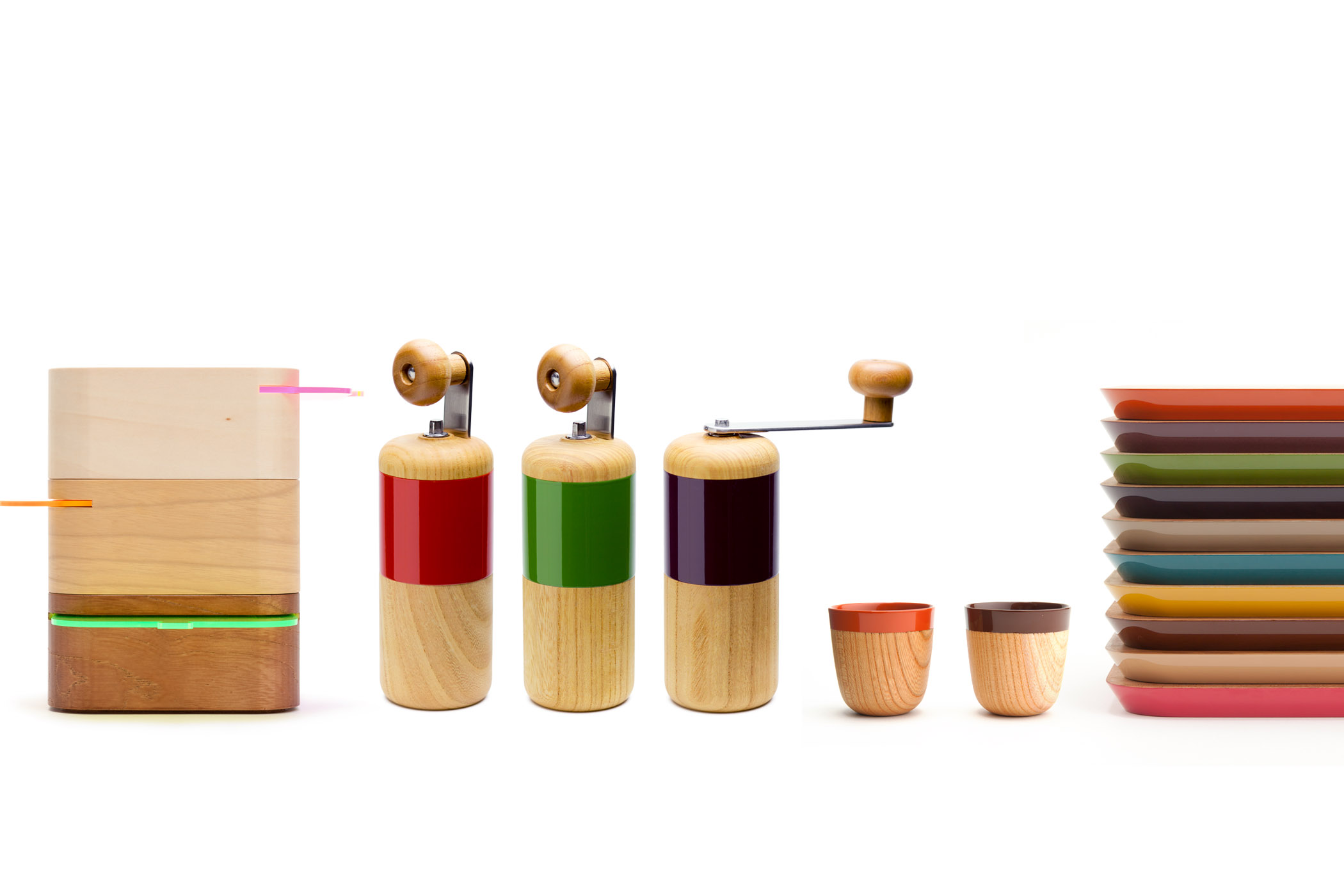chanto — Gifts and Souvenirs

These chanto products are made of pleasing natural materials. The handles and grips are made of natural wood, while the edges are painted with a smooth colored lacquer to improve the user’s drinking experience. The use of color and pretty forms have a feminine feel and make these objects perfect gifts, whether for yourself or for others.
| Title | chanto — Gifts and Souvenirs |
|---|---|
| Date | 2011.07 |
| Theme | Wooden serving ware and cups — Gifts and souvenirs |
| Techniques | Woodworking, wood bending (magemono), lacquer, finishing, lathework (hikimono), acrylic |
| Materials | Zelkova, Japanese cherry birch, hiba, jujube, white birch, wood veneer board, colored lacquer, urethane, fluorescent acrylic/ ceramic coffee mill |
| Client | Internally developed |
| Design | Takumi Shimamura |
Integrated traditional materials and techniques
The colors of these chanto products are achieved using a high-quality, unique lacquer developed in Hikone.
Woodworking
Working with unfinished wood is an important initial process for creating the foundation or frame of a product.
Woodworking at INOUE is based on the exacting quality found in the traditional arts that have been cultivated by the production of Buddhist altars in the castle town of Hikone since the Edo Period (1603-1868 CE). Craftsmen produced these altars by hand and without nails, demanding uncompromising quality in the careful selection of the best materials for use in mortise and tenon construction. These altars are durable enough to be handed down through many generations. Furthermore, we have connections with woodworking shops in other areas that specialize in mass production, allowing us to select the appropriate methods of woodworking for any project.Lacquering
Lacquer is Japan’s exceptionally beautiful and high-quality traditional method of finishing. It is one of the most protective coatings in existence but can be very difficult to handle. Applying lacquer evenly requires the touch of a skillful craftsman from the first coat. The lacquer must be applied in many coats, from the first coat to the final finish, and the painting and polishing processes must be repeated many times over.
A high-gloss lacquer finish, considered the highest level of lacquer, involves the painted lacquer being polished flat, after which raw lacquer is repeatedly rubbed into the surface and polished to bring out a deep luster that is nearly mirror-like.
Based on our extensive knowledge of producing Buddhist altars, INOUE is able to offer the appropriate lacquering methods and craftsmen capable of implementing them, from a black, high-gloss lacquer finishes to a broad range of other coatings and lacquer colors.Colored lacquer
At INOUE, our lacquer craftsmen have created a color chart with more than 800 colors, and use a unique, high-quality lacquer developed through many years of trial and error.
Colored lacquers at INOUE are made by mixing natural lacquer with pigments, providing many original colors from the admixture of colors. However, colors such as pure white are not possible to create, due to the properties of the lacquer itself.Finishes (cashew, urethane, etc.)
At INOUE, the quality of our finishes is consistently and carefully scrutinized with a watchful eye. From sophisticated traditional techniques such as base coats of natural lacquer to cashew finishes made with the natural resin of the cashew tree, also a member of the lacquer family, to urethane finishes made with synthetic resins, we provide a wide variety of finishing techniques.
Given our extensive network of craftsmen with unparalleled technical skill, we can fulfill requests for finishes of nearly any kind.Magemono
The single term magemono actually applies to a variety of techniques. Yumage is the most common version, and involves the bending of wood using hot water, but there is also hikimage, in which grooves are dug to assist in bending the wood, as well as the bending in place of disposable shingles. Magemono is widely used as a technique of the traditional arts, and objects are made using it all over Japan.
At INOUE, we select the optimal technique to suit the requirements of each project.Hikimono
Hikimono are objects produced by cutting away at a block of wood with a chisel as it is turned on a lathe.
At INOUE, we can respond to a variety of requests as we have extensive experience making everything from coffee cups to ritual implements using hikimono techniques. We can also finish these objects with various coatings and provide various ornamentation.Acrylic
Acrylic resin is highly transparent, difficult to break, and can be painted with color or lacquer. As it is also thick and has a luxurious feel, we look forward to integrating it into more of our projects as time goes on.
However, the surface of acrylic can be easily nicked, and it tends to yellow when exposed to the sunlight. We understand these qualities and use acrylic only when it is appropriate.